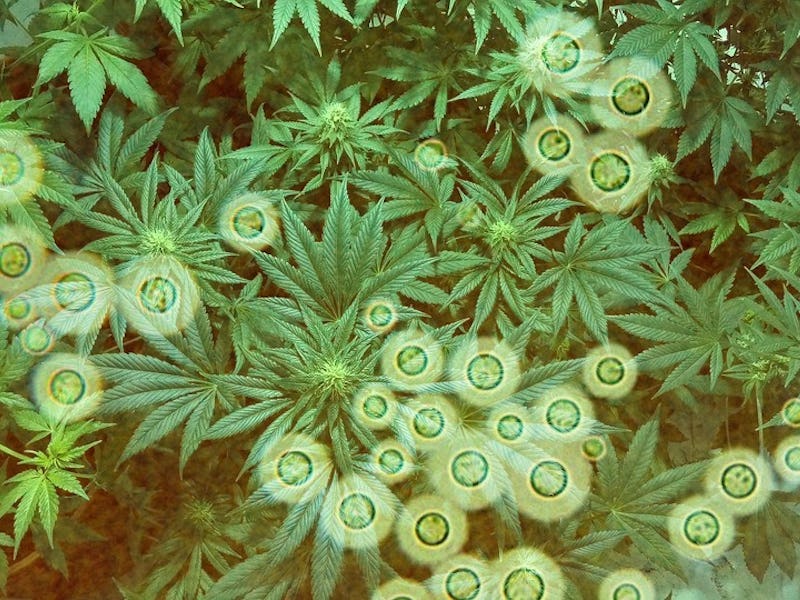Some 1.2 million Americans turn to medical marijuana for help managing their illnesses each year, but few ever consider that contaminants on their bud could make them sicker. After all, we assume that the pills we pick up at pharmacies are sterile, so why should medical weed from a dispensary be any different?
Don’t be so hasty, a group of University of California-Davis scientists warn. The results of their new study revealed that there are a lot of unwanted microbes lurking in medical marijuana, many of which could make patients sicker than they already are.
“Because microorganisms known to cause serious infections in immunocompromised patients were found to be common on marijuana, we strongly advise patients to avoid it,” said clinical medicine professor George Thompson III, Ph.D., the lead author of the study, in a statement.
Cryptococcus, a mold found in samples of medical marijuana, can cause severe damage to the lung.
Their study, which was just accepted for publication in the journal Clinical Microbiology and Infection, used genomics to analyze 20 marijuana samples from dispensaries in Northern California for traces of bacteria and fungi. What they discovered was a host of species you wouldn’t want to read on an ingredient list: Deadly fungi like cryptococcus, mucor, and aspergillus — which you’re more likely to encounter on a moldy ceiling — and notoriously harmful bacteria, like E. coli, K. pneumoniae (which can cause pneumonia), and A. baumannii.
Left untreated, these microbes have been known to be implicated in serious respiratory infections, especially in people whose immune systems are already compromised by illnesses, like HIV, or by harsh medical treatments, like chemotherapy for cancer. Many patients who turn to medical marijuana do so in order to treat the nausea, pain, and lack of appetite that results from illnesses like AIDS and cancer in the first place, making the treatment especially risky. And what makes them all the more dangerous, the researchers write, is the fact that smoking them provides a direct entry into the lungs, where they usually take root when they cause infection.
K. pneumoniae, a bacteria known to cause pneumonia and other respiratory infections, was also found in samples of medical marijuana.
Because marijuana is still illegal at the federal level, there are no nation-wide health and safety standards applied to medical marijuana sold at dispensaries. Conducting research on the pot being sold for medical purposes isn’t easy, they point out; the U.S. Drug Enforcement Agency doesn’t allow universities that get federal funding to study marijuana, so the research had to be conducted in a private laboratory.
Until better regulations are in place, the researchers point out that certain methods of ingestion might minimize a person’s risk of infection. Smoking, vaping, and aerosolizing marijuana is dangerous, they warn, because, contrary to what the use of open flame might suggest, these methods don’t produce enough heat to render it safe. Cooking marijuana and eating it might be the safest bet, though more research is needed to confirm it.
